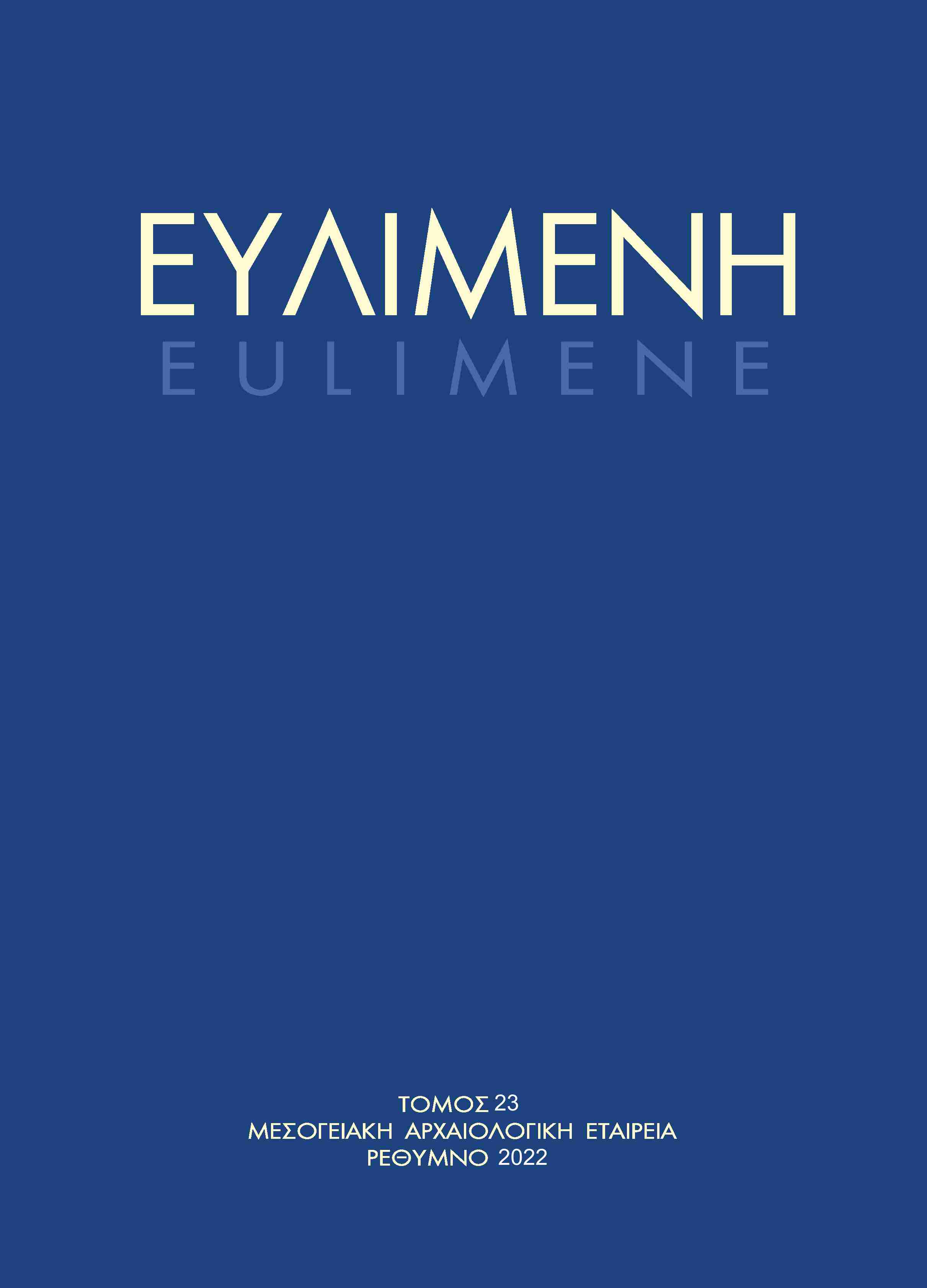Mythography and Archaeology: The Case of Eulimene
Résumé
The main aim of the present research work is to provide a new interpretative perspective on Eulimene’s story by combining literary testimonies and archaeological findings. The story is included in Parthenius’s collection entitled Περὶ Ἐρωτικῶν Παθημάτων, dating back to the 1st century BC. This story appears to be an exceptionally fertile example in which a multidisciplinary approach, that combines Philology and Archaeology, can, potentially, illuminate aspects and facts that would otherwise remain unearthed.
Eulimene’s story deals with eponymous heroes and city founders of Crete. The Cretan cities of Lykastos and Kydonia are attested as early as in Homer and Aptera and Kydonia are also cited in Linear B tablets of Knossos; the name of Eulimene, referring to a Nereid, and the adjective ἄπτερος, applied to some gods, were known to Hesiod and Homer, respectively. Given that Crete was sui generis in terms of its own mythology, it is likely that before Homer there was already a background relating to those Cretan cities.
Eulimene is known as a Nereid. Hesiod reports it in his Theogony and pottery as early as the 5th c. BC attests it, as well. A different perspective is introduced by a piece of textile and a pyxis, which hint at an association of Eulimene with Crete, particularly with Phaedra and Ariadne.
There is also a Messenian story, reported by Pausanias, which presents similarities and common patterns. However, the story of Eulimene is rather more complex since the Messenian story was arguably modelled on the predating Cretan version.
Eulimene’s story in Parthenius’ collection was structured according to the aesthetic standards of the Hellenistic era. However, the story seems to combine various elements, some of which echo Minoan times (the ritual of human sacrifice carried out by the king-priest, a union designed to result in fertility, interrupted in this case) and others which echo archaic times (dissection and forced extraction of the baby). Thus, I find particularly interesting the archaeological finding of the cut-up skull of a young girl, which Andreadaki-Vlazaki brought to light during the excavation at the Mycenaean palace of Kydonia at Chania.
##plugins.themes.ekt-hometheme.article.details##
- Numéro
- EULIMENE 23 (2022)
- Rubrique
- Articles
- Catégories

Ce travail est disponible sous licence Creative Commons Attribution - Pas d'Utilisation Commerciale - Pas de Modification 4.0 International.
The copyright for articles in this journal is retained by the author(s), with first publication rights granted to the journal. Authors who submit articles to this journal confirm that third-party intellectual property rights are not violated in any way. By virtue of their appearance in this open access journal, articles can be used freely, with proper attribution, for educational and other non-commercial purposes. The Mediterranean Archaeological Society retains the right to publish papers that appear in EULIMENE in any form, including electronic, the journal may assume in the future. It also retains the right to deposit articles published in EULIMENE in its repository.






